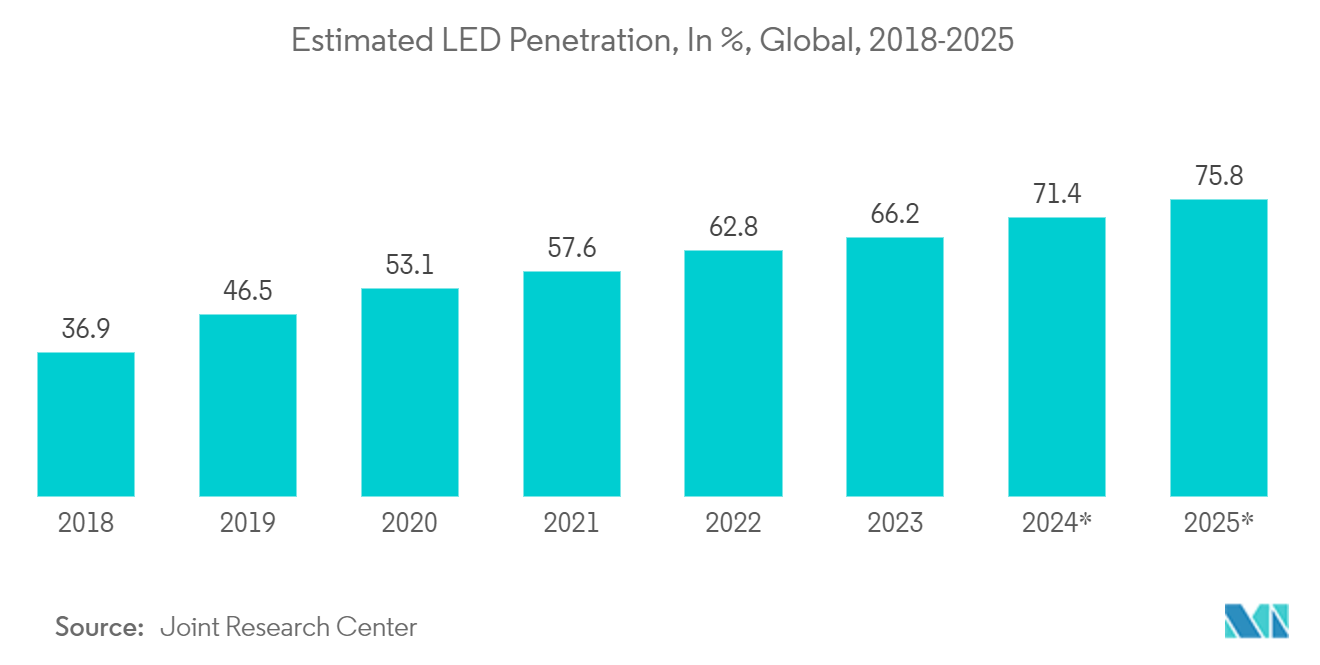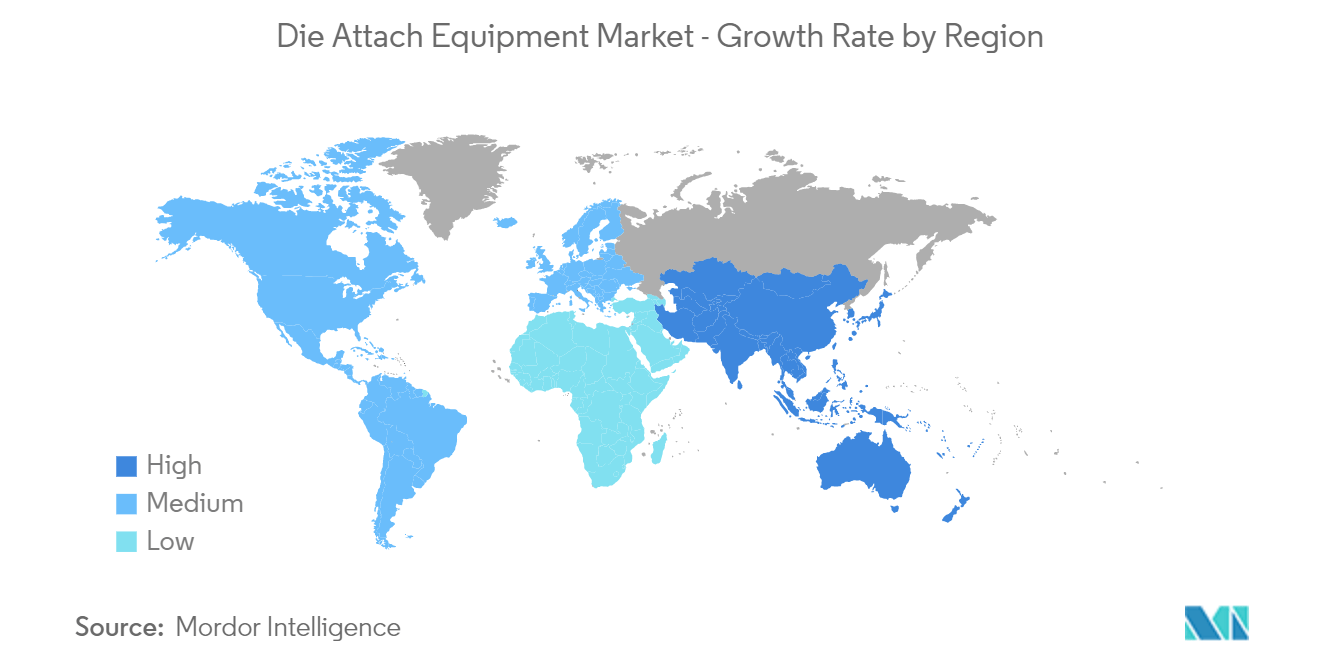Market Trends of Die Attach Equipment Industry
LED to Witness Significant Growth
- Die attach material is key in the performance and reliability of mid, high, and super-high power LEDs. The demand for die-attach equipment is increasing with an increasing LED penetration rate. The selection of suitable die-attach material for a particular chip structure and application depends on various considerations, which include the packaging process (throughput and yield), performance (thermal dissipation output and light output), reliability (lumen maintenance), and cost. Eutectic gold-tin, silver-filled epoxies, solder, silicones, and sintered materials have all been used for LED die attach.
- For instance, SFE provides an Epoxy Adhesive bonding method where its LED Epoxy Die Bonder machine features an index time of 0.2 Sec /Cycle (90 Percent Rate of Operation) with a chip size of 250 * 250 standards, providing lead frame recognition through 2 Cameras. Its software function provides auto mount level & pick-up level teaching functions.
- Further, conductive adhesives (mostly silver-filled epoxies) constitute LEDs' most extensive thermal die-attach materials (by unit number). They are compatible with existing back-end packaging equipment and provide an attractive cost/performance balance (typically up to 50 W/mK thermals with secondary reflow compatibility). As they stick to bare silicon, they are the most preferred material for dies without back-end metallization like GaN on silicon.
- Further, in the LED market, there are a lot of rivals or competitors, and ASM is one of the prominent players in this market, and its LED Epoxy High speed die bonder AD830 dominates in the LED market. As more and more countries are getting close to phasing out conventional bulbs, LEDs are continuing their march to the top of the market. According to Joint Research Center, The penetration rate of LEDs based on sales is raising and is expected to reach a penetration rate of 75.8 % by 2025. This factor enhances the demand for the die attaches equipment market.
- Furthermore, in September 2022, Palomar Technologies launched a new 3880-II die-bonder, which won the 2022 military+Aerospace electronics Innovation Award. This new machine includes options to maximize productivity, reduce programming time by up to 95% and improve overall bonder productivity.

Asia-Pacific Accounts for Significant Market Growth
- Asia-Pacific accounted for the significant growth of the die-attach equipment industry. More than 60% of OSAT (Outsourced Semiconductor Assembly And Test) players present across the world have their headquarters in the APAC region. These OSAT companies use die-attach equipment in the semiconductor fabrication process. Additionally, an increasing number of IDMs (Integrated Device Manufacturers) in the region is expected to boost the market growth shortly.
- In China and Taiwan, the mass production of electronic products, including smartphones, wearables, and white goods, uses several devices, such as optoelectronics, MEMS, and MOEMS. All these devices require die-attach equipment in the assembly process of these components.
- Further, South Korea, China, and mostly Japan's old age population are anticipated to accelerate the need for healthcare services during the forecast period, thus providing scope for devices, such as ventilators, dialysis, and blood pressure monitoring devices constituting MEMS pressure sensors. ESCAP estimates that the geriatric population in the region, aged 60 years and older, could penetrate at the rate of 10.64 by 2025 with 9.55 in the current year and raise to 18.44 by 2050, which represent 60 percent of the worlds population. The instance caters to the growth of the market due to the demand for die-attach equipment for MEMS pressure sensor.
- Furthermore, India is also witnessing growth in a number of smart cities, due to government initiatives and are expected to incorporate electronic solutions for purposes, such as surveillance, maintenance, monitoring, etc. According to smartcities.gov.in, the central government has allotted USD 977 million into the development of 60 such smart cities. This leads to the demand for a higher number of CMOS image sensors, which further supports the market growth.
- High Power lasers are finding extensive demand in industrial sectors for a wide range of applications, including cutting, welding, and fabrication. Companies are moving towards Laser technologies to take advantage of high performance and reliability. The advancement in laser diode significantly increases the demand for equipment, which processes the technique of Epoxy and Eutectic bonding.
- Further memory demand is expected to increase with the development of IoT, AI, and ADAS. As a result, productivity improvement in memory chip manufacturing and improvement of post-processing device reliability will be required more than in the past. To address this, in August 2022, Stanford engineers created a more efficient and flexible AI chip, which could bring the power of AI into tiny edge devices that contributes to improved throughput and reliability in memory production.


